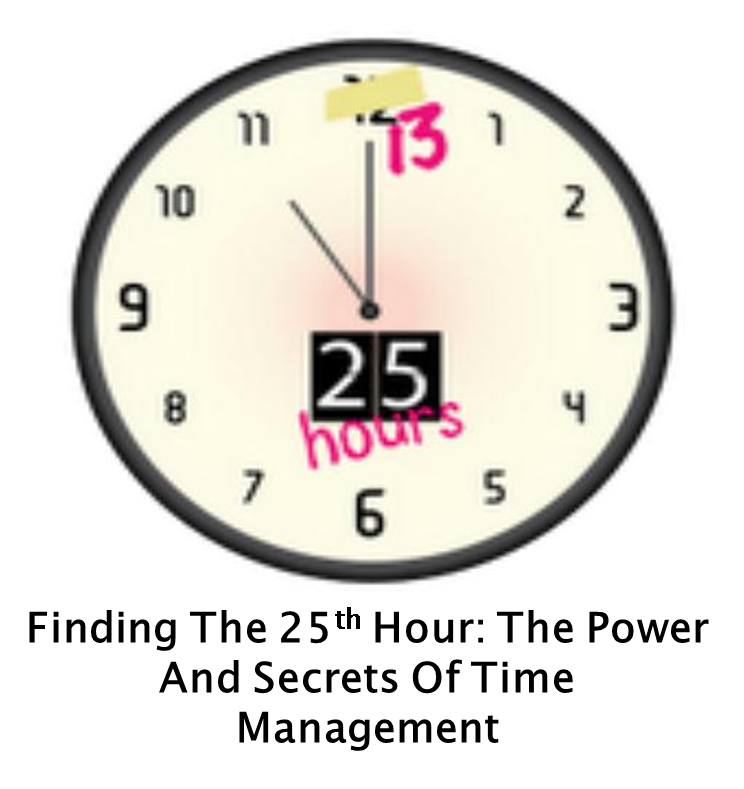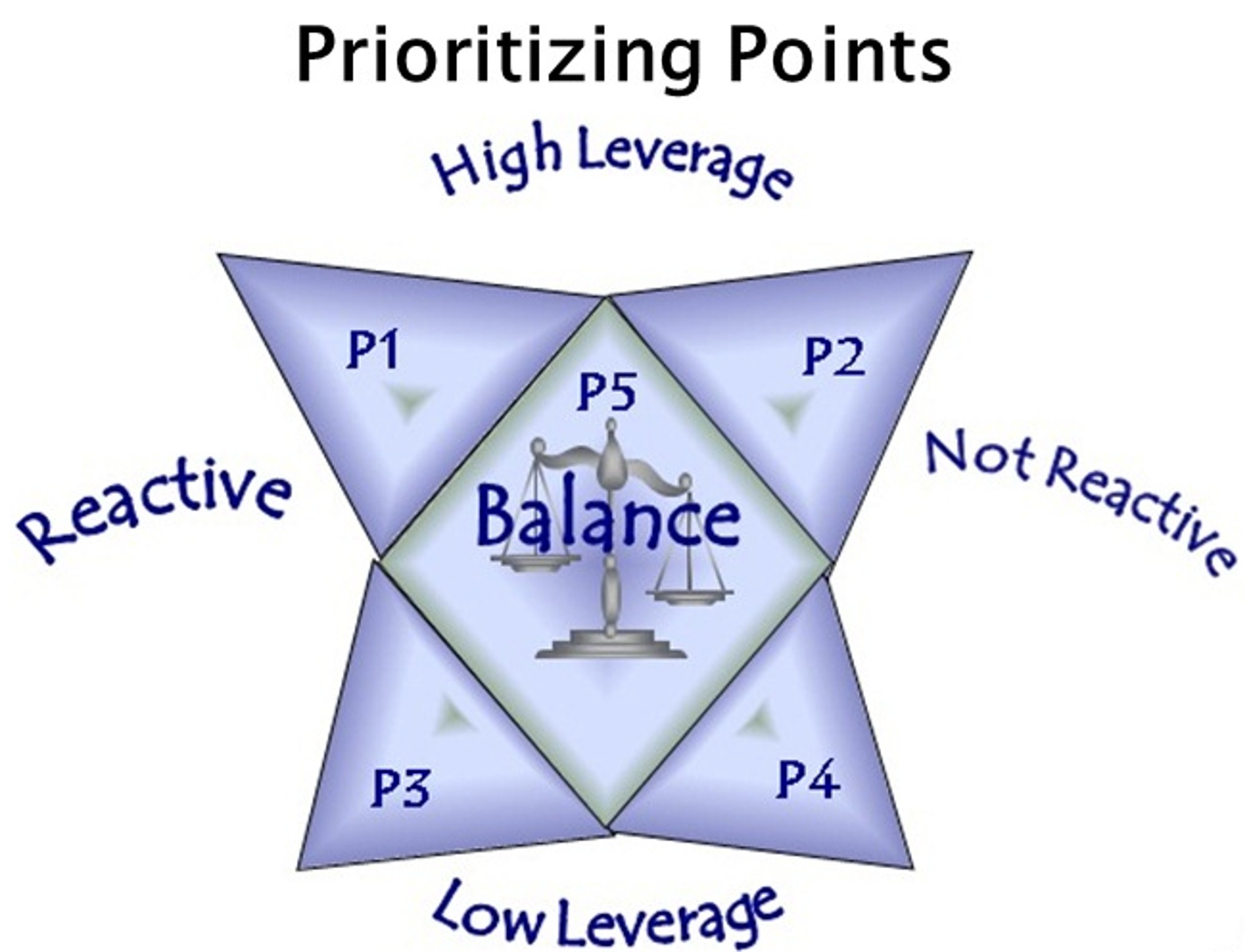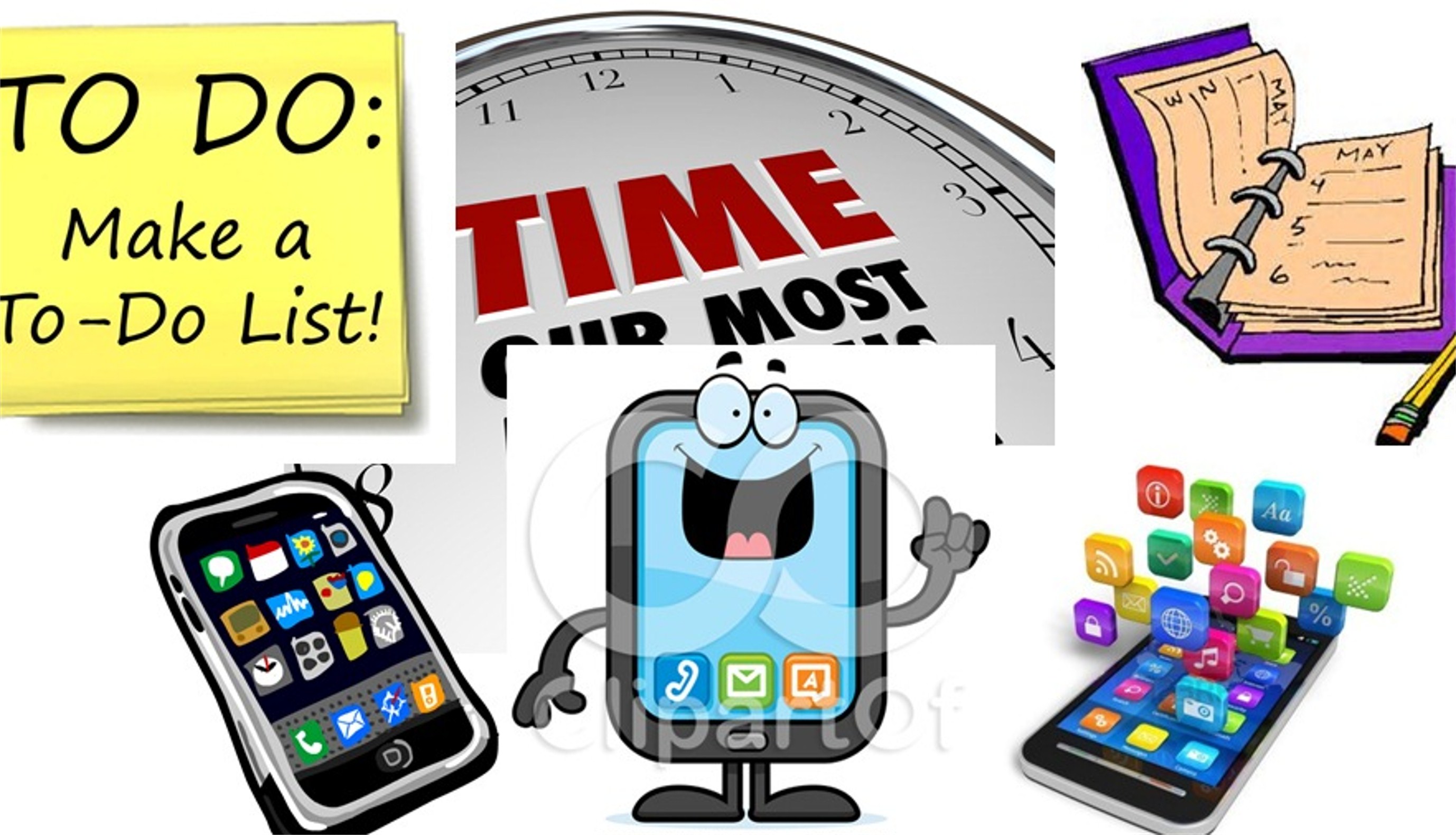
Time management is a pretty hot topic and over the last few months I have spoken on it at several entrepreneurial and business leadership conferences.
I have been teaching classes and concepts of time management for over 25 years. When I consult and coach these business leaders I often hear them say things such as, “There aren’t enough ‘hours’ in the day.” “If I could just have one more hour I’d be okay.” But how does one “do” it? How do you find that 25th hour? How does a business leader find the time needed to get everything done? How can one “find” that extra hour needed during the course of their busy day to get to everything?
This is a good news/bad news situation. The bad news is that in reality you only get 24 hours in the day. However, the good news is that there are things that you can do to make the most of the 24 hours that you have and cut down on where you might be wasting hours of your precious time.
There are numerous strategies, tactics and tools that can be used to establish priorities to get organized, as well as an entire industry that has been built around it; which can assist in keeping both work and personal priorities in balance. I don’t endorse any particular system; there are many good ones available. The key is to find what works for you, whether it’s on your smartphone, an electronic system, a paper-based system, or you keep it all in your “head” there are certain principles that can be adhered to in order to carve out more time in your calendar.
Technology may have changed the way in which we do our jobs, however, some of the fundamental basic issues regarding time management have not changed over the years; and in some cases, the problems have actually gotten worse as a result of the scope of information that modern technology has created.
Two Big Problems
For example, recently when addressing a group of entrepreneurs at a business conference I asked them what their two biggest problems were with respect to time. The responses were identical to responses I have been receiving to these questions for years:
- Correspondence: The quantity of emails received and the time needed to sort through all of them
- Interruptions: The time lost by interruptions caused either via phone, in-person or electronic media
Two Quick Tips
There are two quick tips that can alleviate the problems of too many emails and constant interruptions.
The Rules
Quick Tip #1: Use the “rules-wizard:” I have seen people who had several thousand emails all in their inbox. It was no wonder that this was a time waster! It was because they these people were constantly wasting time sorting through thousands of emails “looking” for an elusive message that they suddenly “needed.”
If this describes you, then one of the first things you need to do is learn how to use the “rules-wizard” in your email program. Email rules can be created that will automatically filter and sort your mail in to folders. You can set it up to flag urgent messages, for example anything from your boss, and less important messages can be sorted into folders for reading later. This way only important emails that need to be seen right away go into the inbox and items are much easier to find later because the individual folders hold all the important correspondence from your boss, co-workers, clients, etc. which makes for much easier retrieval later on. Time spent searching for an email is greatly cut down as all the correspondence is in the same folder.
Schedule a Meeting
Quick Tip #2: Managing Interruptions: There’s an old saying that goes: “Lack of planning on your part does not constitute an emergency on my part.” This saying holds true when it comes to managing interruptions. You need to take control of your schedule. A good way to do this is to schedule your time in blocks. For example: you want to work on a project, however, colleagues keep stopping by, or the phone keeps ringing and you have to deal with all these impromptu issues. The result is that nothing gets done.
What to do? Schedule a “meeting” with yourself. If possible get away from your work area and go to a conference or break-out room where you can work undisturbed.
Use your voicemail so it serves you. Change your voicemail message. Indicate that you will be returning calls during a specified time period… and then be sure to follow through. If a call comes in while you’re making calls – let it go to voicemail and continue returning calls. This applies to text messages as well.
Nice “Tips,” But I Still Have Problems!
While these two tips are useful for anyone, the fact remains that these are not the only time management issues that people have to deal with and while they may help the problem can run much deeper.
Working Smarter - Not Harder
In Part 1 of this series, two useful tips for managing time were provided; learning to use the rules wizard in your inbox and scheduling your time in blocks to manage interruptions. While these quick tips can assist in dealing with some of the day-to-day activities in the short term, effectively managing your time goes far deeper. In the long term, the secret to effective time management lies in working smarter, not harder.
Link Daily Activities to Strategic Business Goals
The working smarter part of time management is based upon the fundamental principle of linking your activities to your strategic business goals and objectives.
All business people and managers have business goals and objectives - that's the reason you are in business or have a job! In the bestselling book Simplicity, Bill Jensen says, "top performers and 'most admired' companies had very clear goals and objectives. And they worked very hard to keep them clear... day in, day out." In order for them to do that day in, day out, they know what's important.
The old adage that time is money is well understood. If we waste an hour a week for 52 weeks, we have wasted 52 hours in a year's time. Multiply that times the hourly rate and that is the amount of money the wasted time costs in a year. To be frank... I think it's safe to say that we all probably waste at least one hour per day... and there's the 25th hour!
While common ABC priorities may be useful, if they are not aligned with your strategic business goals, you may end up merely prioritizing crises. For example, if your goal is to increase cash flow and you spend the day organizing your files and did not speak to one customer, you may be working hard but not achieving business results because you did not engage in any work that was providing leverage towards your goal.
Leverage vs. Reactivity

The Prioritizing Points Model provides a tool for identifying activities that align with business goals. It is based upon two elements; leverage and reactive. Activities that have leverage are activities that are aligned to our goals and are moving us in the direction of achieving them. Activities that are reactive are the activities that are urgent; that we have to respond to.
Prioritizing Points
Prioritizing Points are established by combining these two elements to create four of the prioritizing points in the model.
Point 1 (P1) represents the combination of high leverage and reactive. Because the activities related to this point are high leverage we have to respond, and sometimes react quickly. These are crises, sudden problems, deadlines, etc.
Point 2 (P2) represents the combination of high leverage and not reactive. These are the activities needed for effective time and life management because they are high leverage. They are not reactive because they do not have to be addressed immediately.
Point 3 (P3) represents the combination of reactive and low leverage. It's a sudden crisis that must be dealt with. However, they are low leverage. These are the interruptions that get us off track.
Point 4 (P4) represents the combination of low leverage and not reactive. These are our time wasters and escape activities.
I'll Do It Tomorrow - Procrastination
Effective time management comes from learning to spend the majority of our time in activities that in the P2 category (high leverage and not reactive) because we're working on the things that are directly related to our goals.
However, what typically happens here is that we procrastinate; we put the activities in P2 off because there is no urgency involved. Then when the due date approaches they jump into P1 and we become reactive and have to respond to the urgency.
When most of the things we have to accomplish are in a crisis mode, we have more and more things that we have to respond to that are crisis driven. Then, when we finally get a break we're so beaten up by the stress of being in crisis mode, we escape into P4 and engage in coping types of behaviors and activities. This is where the danger lies because these are our time wasters.
The key is to focus on activities that fall into the P2 category. We will always have crisis situations that we will have to respond to; however, when we handle the situations while they are in P2, we will have less of them jumping over to P1.
When P3 activities come up, we handle them and get back to high leverage activities. Whenever possible we avoid engaging in activities that fall into P3 and P4. The key is to effectively balance all these activities, which is the next element of the model.
Point 5 (P5) Balance. The center of the model represents the fifth point, balance. The image of the uneven scale at the center of the model represents the fact that we'll never be equally balanced in all of these points. In reality, we  do not want to be. Each person has to find the right balance that will work for him or her. This is balancing all the interruptions that occur during the course of a day and being flexible enough to determine the appropriate response when they do.
do not want to be. Each person has to find the right balance that will work for him or her. This is balancing all the interruptions that occur during the course of a day and being flexible enough to determine the appropriate response when they do.
 do not want to be. Each person has to find the right balance that will work for him or her. This is balancing all the interruptions that occur during the course of a day and being flexible enough to determine the appropriate response when they do.
do not want to be. Each person has to find the right balance that will work for him or her. This is balancing all the interruptions that occur during the course of a day and being flexible enough to determine the appropriate response when they do.We all have to deal with the interruptions and crises of daily life and effective time management comes from employing the proper tools to help us manage our activities and our time.
What Time Management System Should I Use?
There are many excellent time management systems and tools available and I don't endorse any particular one. It doesn't matter whether it's electronic, shared, on your phone, paper-based or you keep it in your head. The point is that a time management system is only effective if you use it. If you learn to apply to these principles, you can learn to identify and eliminate your time wasters so you can make the best use of the 24 hours you already have; thereby finding your own 25th hour.
Mary Anne Kochut of Champions for Success, LLC is an author and motivational speaker as well as a seasoned corporate trainer, workshop presenter and business coach. Her first book Power vs. Perception: Ten Characteristics of Self-Empowerment for Women was released in 2013.
Reference:Jensen, Bill, Simplicity: The New Competitive Advantage, Persus Books, Cambridge, MA
